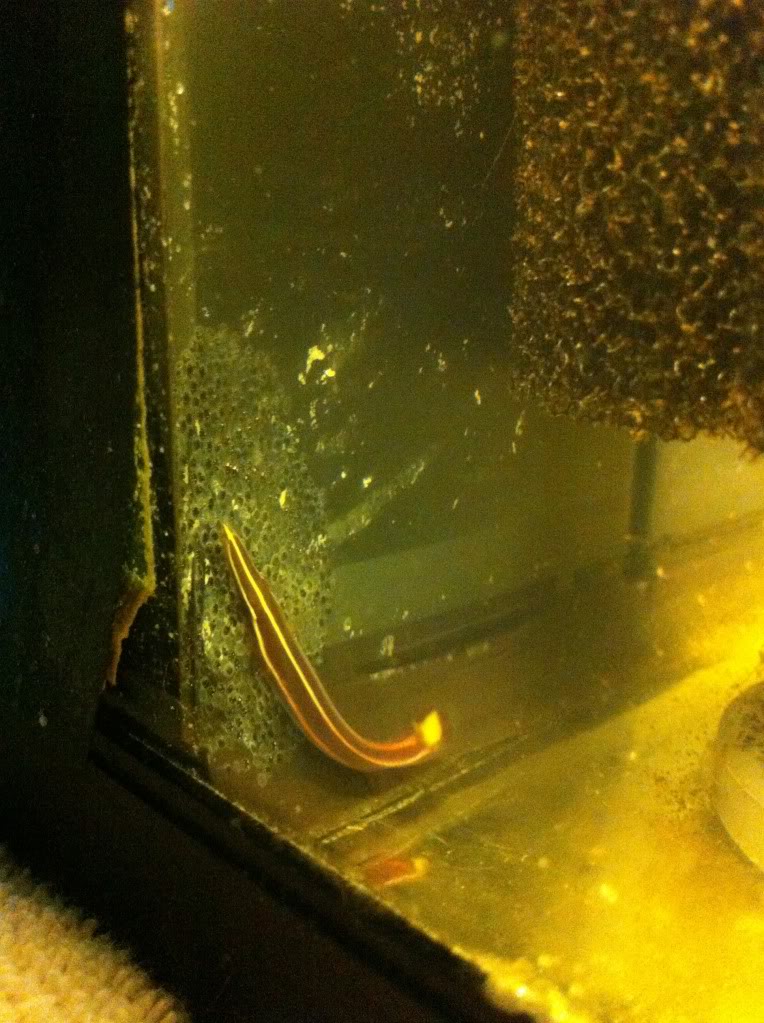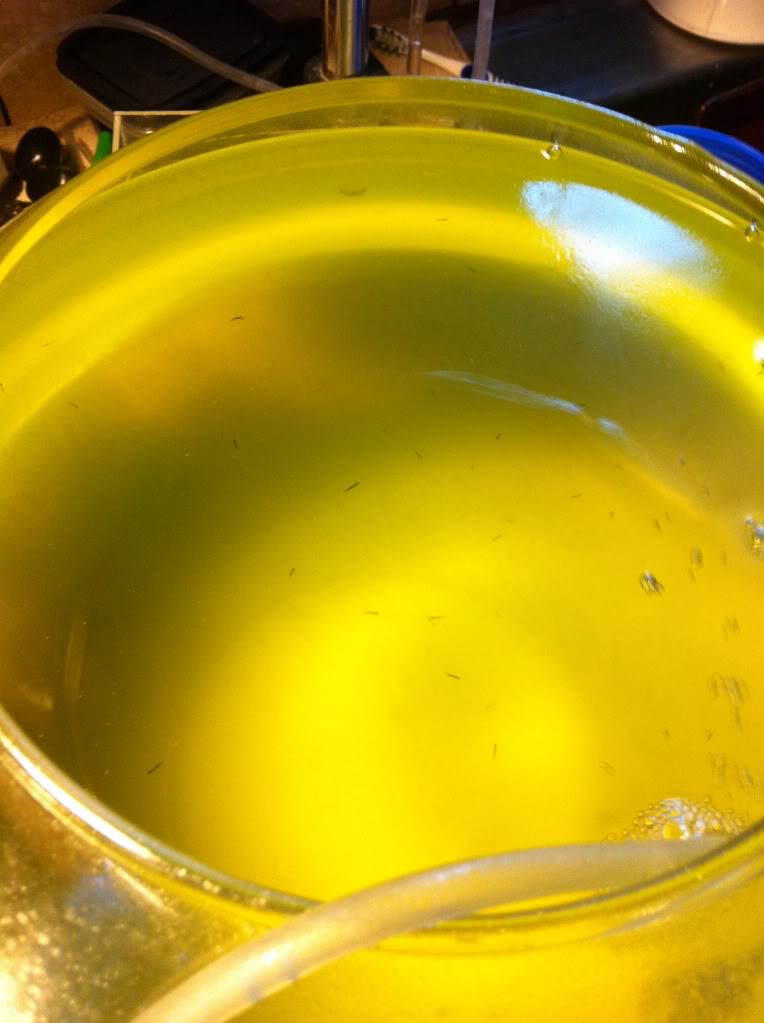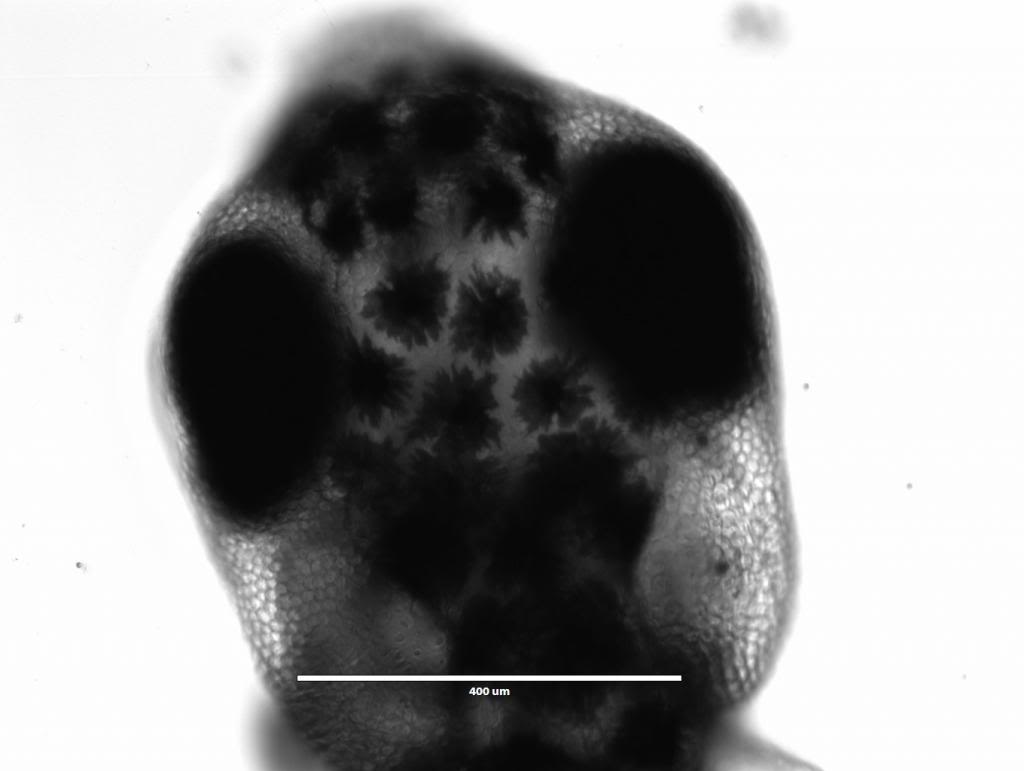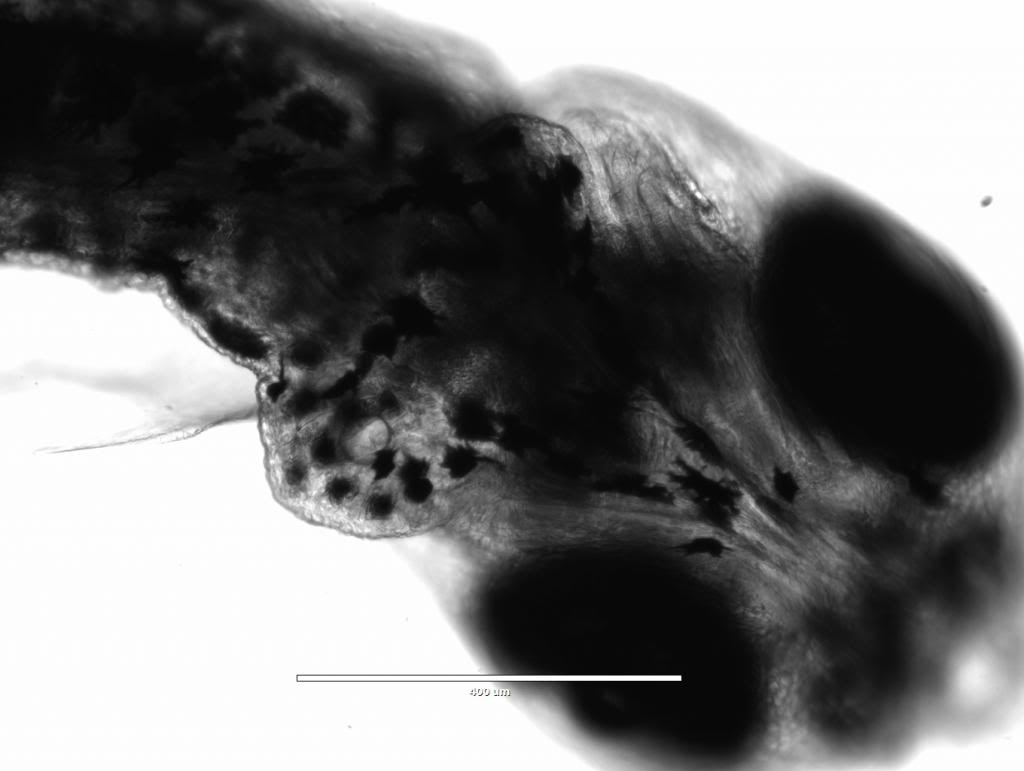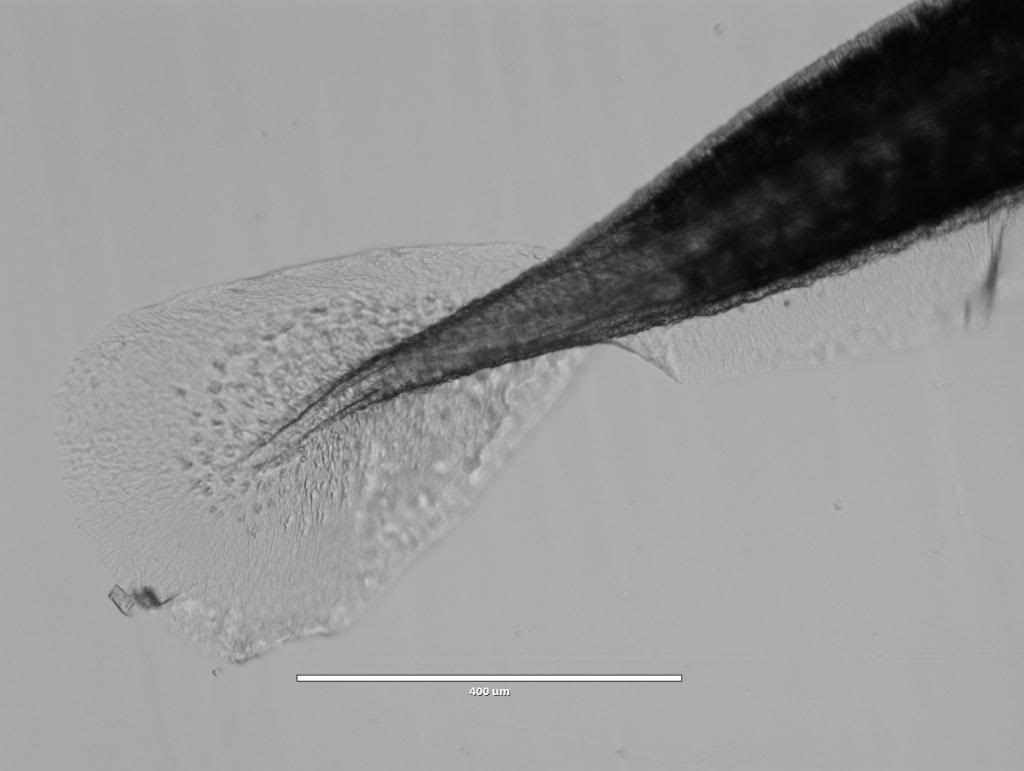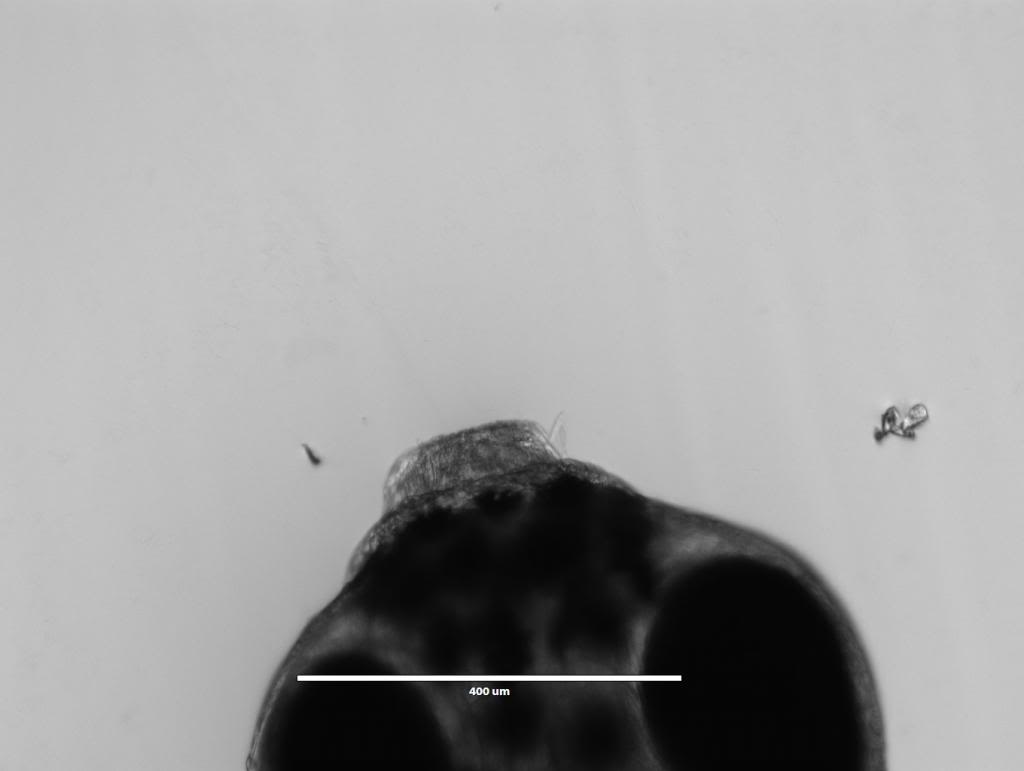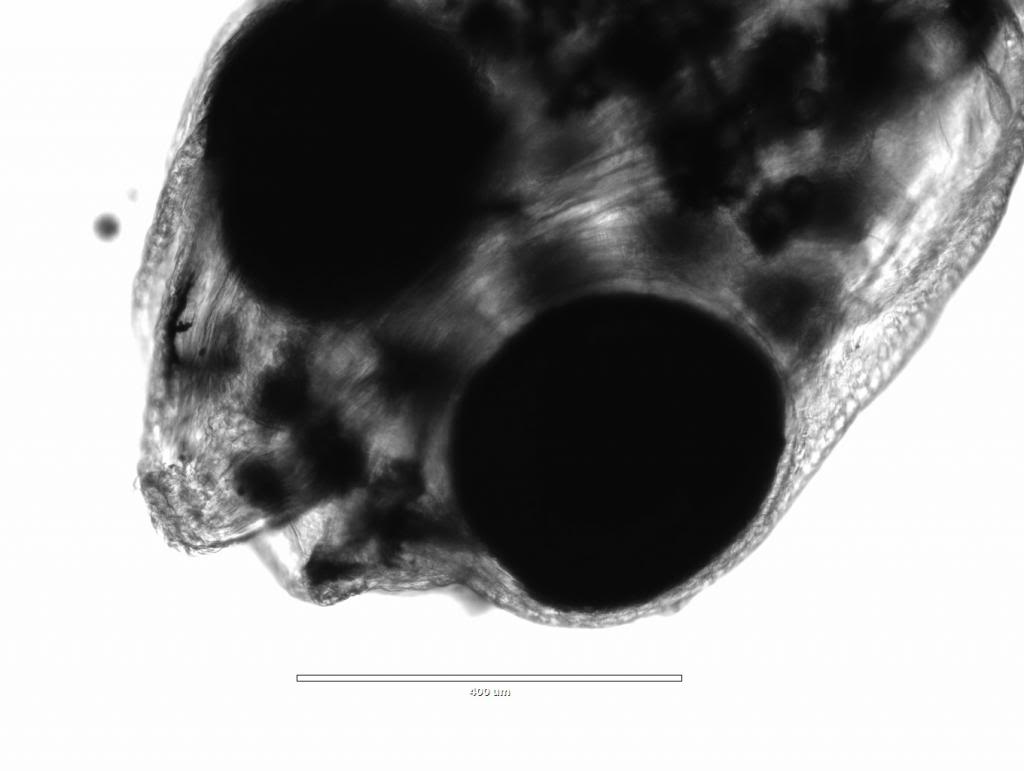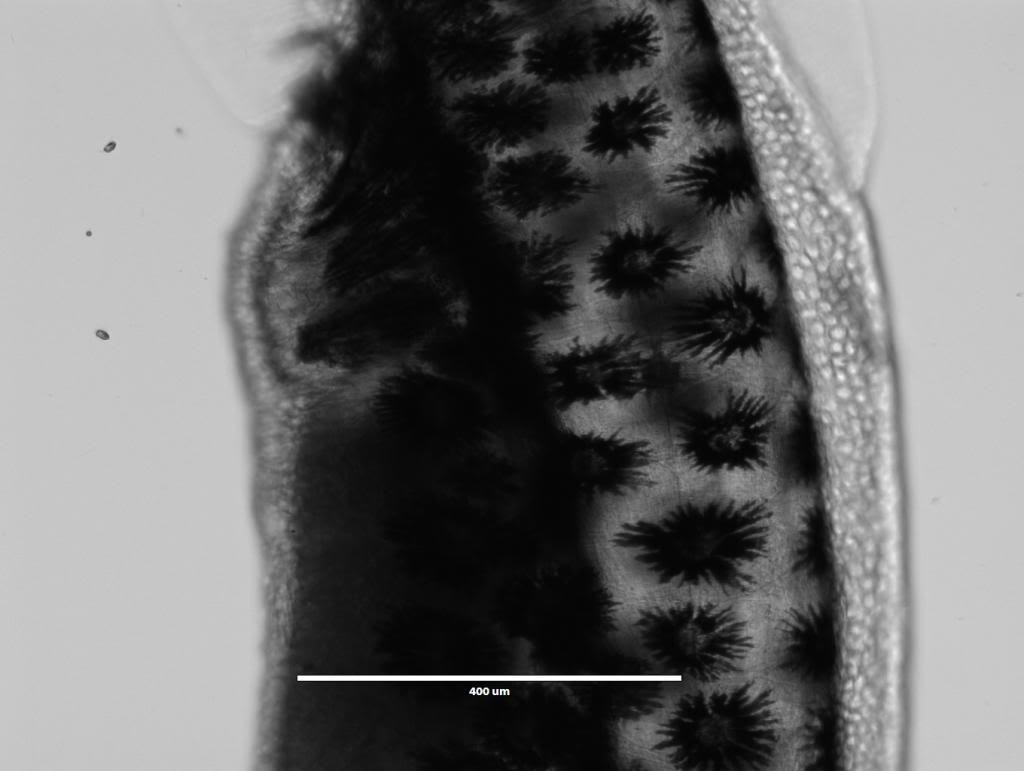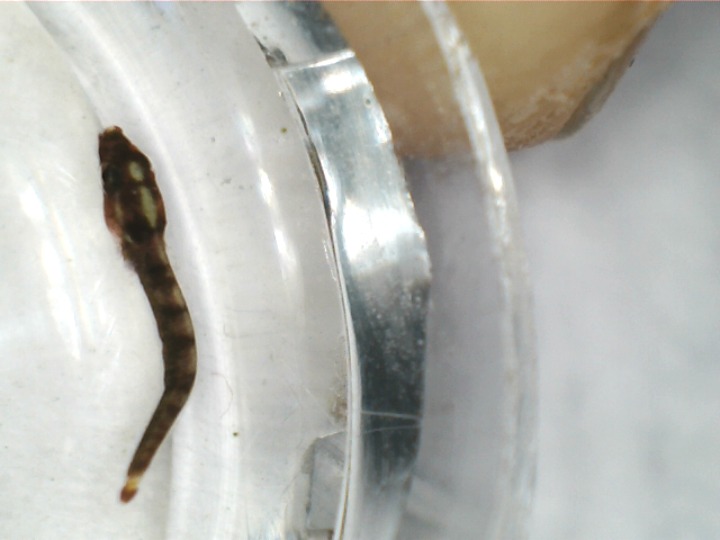In February I saw two of these fish at my LFS. I did a little research on my phone while there and didn't come up with too much other than they live with Diadema urchins or branching corals and eat the tube feet of the urchin and also the copepods and the eggs of a commensal shrimp. They also eat burrowing bivalves in coral colonies. Since I culture several different copepods and also hatch and grow brine shrimp, I thought I would give them a whirl.
Once home, I did some more research and realized I had two females. You can tell the difference based on snout shape. Females have long, thin snouts and males have short, wide snouts. Here are the two females in their breeder basket in QT:

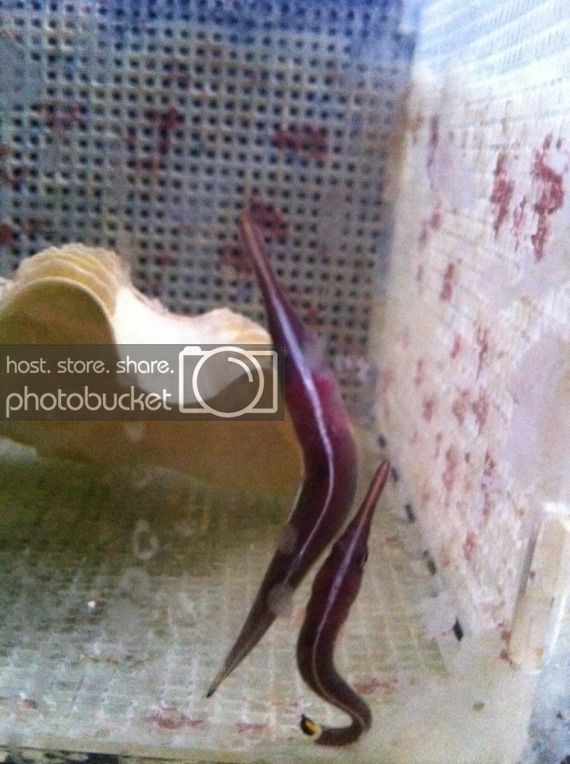
Initially I fed live foods, but within a couple days both were eagerly eating Nutramar Ova from a dish (eventually they learned to stab the food out of the water column, but at first they often missed more than they got). In April (IIRC) I was able to get several more of these. Of the twenty or so I have seen at the LFS or have ordered online, only 3 have been males. I purchased two males and two additional females. They were moved to a 12 gallon biocube for QT. Here is a pic of a female:
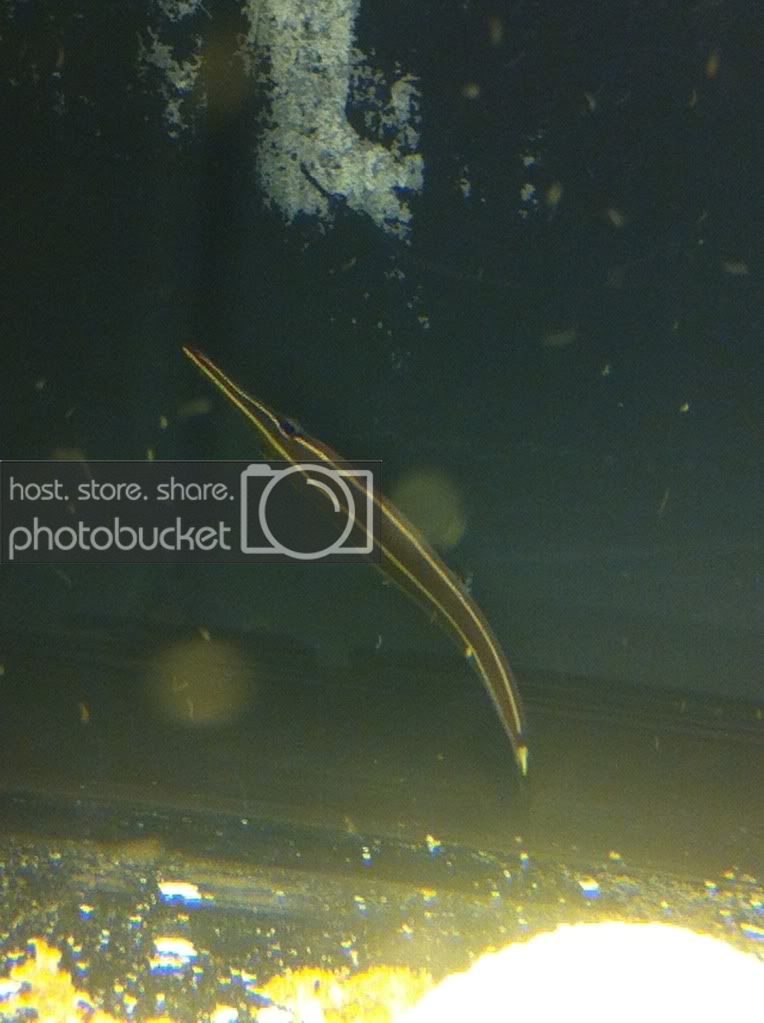
Males:

Male in a clam shell (in the wild they use empty bivalve shells as spawning sites):

Males and females together for snout comparison:

The males were harder to train onto ova. The smaller male never really ate well and eventually died, leaving me with one male and four females. This was actually an ideal ratio for several reasons. In the wild males often eat (and sometimes ONLY eat) the eggs from the nests to maintain body condition. They don't leave the nest so other males can't steal the rare bivalve spawning sites and rely on the eggs for food (it's called partial filial cannibalism, here is a paper about it and this species:http://www.sekj.org/PDF/anzf45/anzf45-055.pdf ). Having only one male limits any male-male competition, which hopefully would equate in a captive environment to a male that doesn't eat eggs since he can leave the nest to eat. Also, having many females laying eggs would mean that if he does eat the eggs, there still should be plenty left that make it to hatching.
In the cube, all five fish get along relatively well. The only aggression or posturing I see between the females is when they are waiting to be fed. After all were taking Nutramar Ova readily, I began feed enriched live brine that was partially grown out to encourage them to eat slightly larger food items. They have very small mouths, so you really have to take baby steps with them, but they learn to eat new foods relatively quickly and once they accept a new food, they attack it pretty voraciously after that. Once they would eat the partially grown live brine, I began to mix in enriched dead brine with the ova and they easily took to that. The male, although the most difficult to initially wean, is now the most adventurous with new foods and the females generally follow suit rather quickly. Just within the last week the male and one female have begun to eat Hikari mysis.
Once home, I did some more research and realized I had two females. You can tell the difference based on snout shape. Females have long, thin snouts and males have short, wide snouts. Here are the two females in their breeder basket in QT:


Initially I fed live foods, but within a couple days both were eagerly eating Nutramar Ova from a dish (eventually they learned to stab the food out of the water column, but at first they often missed more than they got). In April (IIRC) I was able to get several more of these. Of the twenty or so I have seen at the LFS or have ordered online, only 3 have been males. I purchased two males and two additional females. They were moved to a 12 gallon biocube for QT. Here is a pic of a female:

Males:

Male in a clam shell (in the wild they use empty bivalve shells as spawning sites):

Males and females together for snout comparison:

The males were harder to train onto ova. The smaller male never really ate well and eventually died, leaving me with one male and four females. This was actually an ideal ratio for several reasons. In the wild males often eat (and sometimes ONLY eat) the eggs from the nests to maintain body condition. They don't leave the nest so other males can't steal the rare bivalve spawning sites and rely on the eggs for food (it's called partial filial cannibalism, here is a paper about it and this species:http://www.sekj.org/PDF/anzf45/anzf45-055.pdf ). Having only one male limits any male-male competition, which hopefully would equate in a captive environment to a male that doesn't eat eggs since he can leave the nest to eat. Also, having many females laying eggs would mean that if he does eat the eggs, there still should be plenty left that make it to hatching.
In the cube, all five fish get along relatively well. The only aggression or posturing I see between the females is when they are waiting to be fed. After all were taking Nutramar Ova readily, I began feed enriched live brine that was partially grown out to encourage them to eat slightly larger food items. They have very small mouths, so you really have to take baby steps with them, but they learn to eat new foods relatively quickly and once they accept a new food, they attack it pretty voraciously after that. Once they would eat the partially grown live brine, I began to mix in enriched dead brine with the ova and they easily took to that. The male, although the most difficult to initially wean, is now the most adventurous with new foods and the females generally follow suit rather quickly. Just within the last week the male and one female have begun to eat Hikari mysis.




